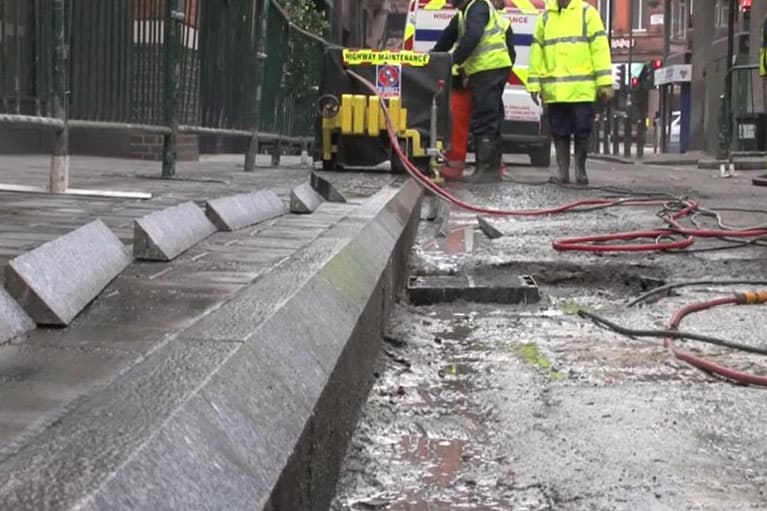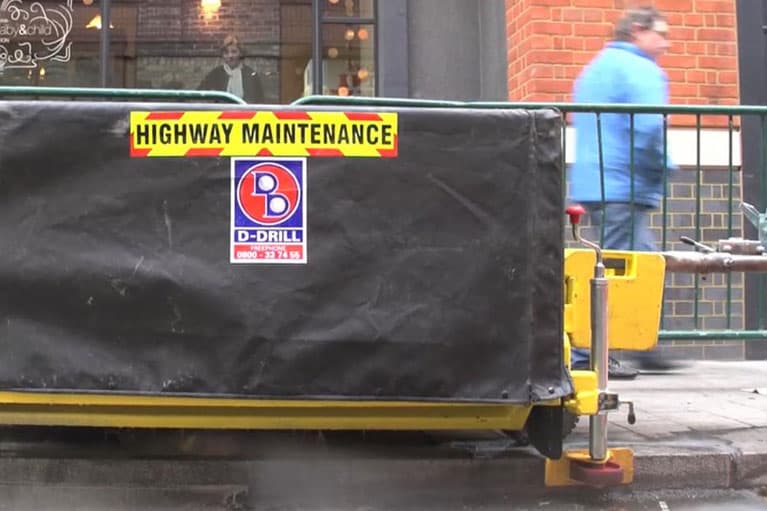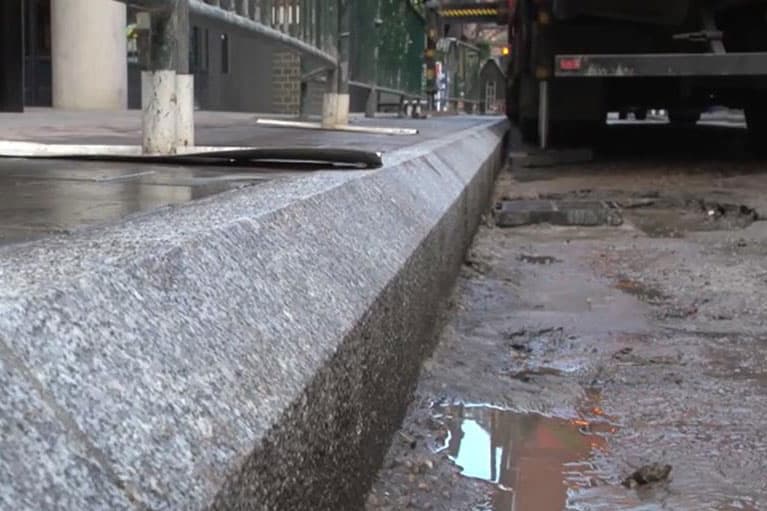Taking the Edge off Kerb Works
- Youtube Views 216 VIDEO VIEWS
DIAMOND drilling specialists D-Drill have developed a machine capable of cutting 45 degree angles in kerbs with minimal waste and disruption.
The prototype was trialled outside a boutique hotel on Denham Street in London's Piccadilly. Drainage issues had prevented new granite kerbs from being installed flush with the roadway - resulting in car doors being damaged as they pulled up outside.
When Coventry-based D-Drill were approached by Westminster City Council and engineers WSP to see how the edges could be cut off kerbs, they found that there was no equipment available.

Above: D-Kerb cutting off a kerb edge in central London (image courtesy of D-Drill).
“We actually built our own prototype for a 45-degree cutting machine,” said D-Drill’s managing director Julie White.
Called “D-Kerb”, the now-patented machine is capable of creating a chamfered kerb in-situ in a matter of hours.
Traditional replacement techniques would have required days of disruption and even road closures, while replacement granite would have had to be imported from China.

Above: D-Kerb works on site and creates minimal disruption to pedestrians (image courtesy of D-Drill).
The new approach not only saves time, resources, and money for the local authorities, it also prevents perfectly good kerb stones being thrown away, reducing waste.
Following successful works in Denham Street, the machine was also used to chamfer kerbs outside the Cafe Royal in London's Air Street.

Above: Chamfered edges help prevent damage to vehicles and bicycles (image courtesy of D-Drill).
D-Drill are now working with Transport for London (TfL) and VolkerHighways to add a 45 degree splay along some 66 kilometres of granite and concrete kerbs on London's North-South Cycle Superhighway, improving cyclist safety.
The approach negates the need to replace kerbs along the entire route.
You can learn more about D-Drill here.








